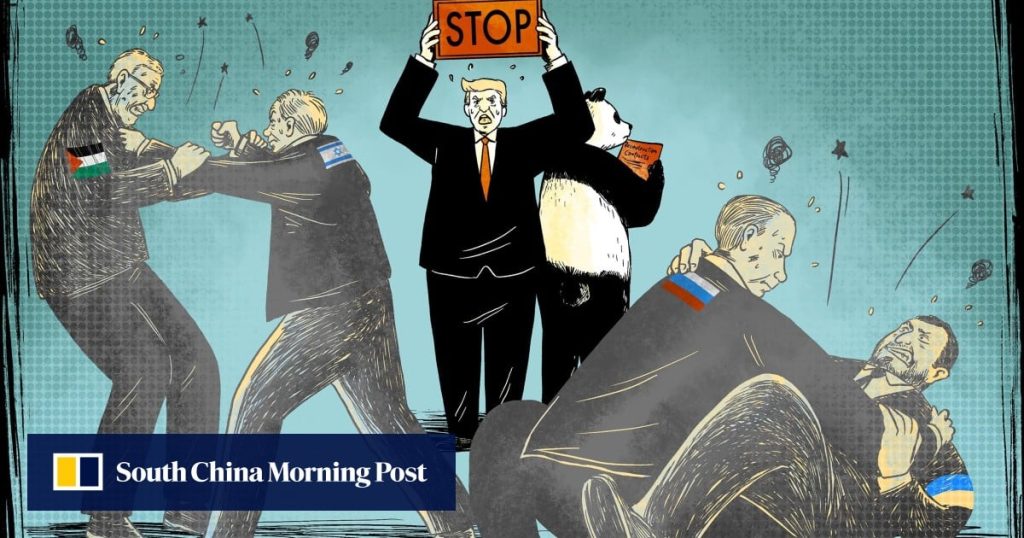Nearly 100 days in, Donald Trump’s second term as US president has been defined by his determination to upend the established order on nearly all fronts of domestic and foreign policy. In the third of this series, we look at China’s pacing challenges amid the American leader’s evolving responses to Ukraine, the Middle East and other conflict areas.
China is struggling to get a fix on US foreign policy under the capricious Donald Trump administration as it navigates a cold war on the trade front and the shifting dynamics of hot wars in Ukraine and the Middle East, analysts said.
Despite China’s stated desire to become a bigger geopolitical player on the world stage, few expect Beijing to take the lead on negotiating peace terms in either conflict.
Rather, look for it to follow its traditional playbook: remain on the sidelines, react to events, take easy wins when Washington falters and wait for a ceasefire to grab a major share of reconstruction contracts.
“It’s very unlikely that China will use that kind of leverage,” said Jeremy Chan of the Eurasia Group, a risk consultancy. “To turn off the tap overnight could have a huge impact on Russia’s ability. But they’ve shown for 20 years they’re not willing to do that with North Korea. It’s all part of a broader pattern.”
By some estimates, rebuilding could cost US$1.1 trillion in Ukraine and US$80 billion in Gaza – a strong enticement for China’s limping economy.



